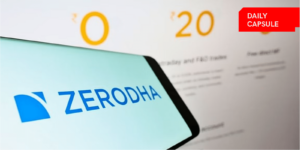One97 Communications-owned on Friday posted a consolidated net loss of Rs 778.5 crore in the third quarter of 2021-22. Its losses widened compared to the same quarter in the year ago period of Rs 535.5 crore, despite a massive growth in its topline.
This was due to the higher payment processing charges of Rs 783.1 crore, taking its direct expense up to Rs 1,002.4 crore from Rs 825.7 sequentially. In the previous quarter, Paytm had posted a loss of Rs 473.5 crore.
In terms of consolidated revenue from operations, Paytm reported 89 percent higher revenue of Rs 1,456.1 crore from Rs 772.0 crore in the same quarter last year.
“The strong growth was driven by an increase in merchant payments processed through MDR (merchant discount rate), bearing instruments (Paytm Wallet, Paytm bank account, other banks’ netbanking, debit, and credit cards), disbursement of loans on the platform, and recovery of commerce business from Covid impact,” said the company in a BSE filing.
“The Q-o-Q growth was driven by higher festive season demand, particularly in our online and offline merchant business,” added the company.
Beyond the transactions and GMV (Gross Merchandise Value), the growth was driven by major sporting events, which led to an uptick in online gaming and food ordering.
Vijay Shekhar Sharma
Paytm reported an EBITDA (before ESOP cost) loss of Rs 393 crore in Q3 of FY22, as against a loss of Rs 488 crore a year ago, and a loss of Rs 426 crore in the previous quarter.
The company had average monthly transacting users (MTU) of about 64.4 million in the third quarter of FY 2021-22, growth of 37 percent year-on-year from 47.1 million. It grew by 12 percent quarterly.
Its GMV for Q3 FY 2022 was 2.5 Lakh, up by 123 percent annually. GMV from processing payments through MDR bearing instruments grew 77 percent yearly .
“We continue to rapidly expand our customer and merchant base,” said the company in a BSE filing. The number of consumers on its platform is over 350 million and the merchant base has expanded to 24.9 million from 20.0 million a year ago.
It further added that its customers are showing greater retention and higher engagement (measured by average GMV and transaction per customer)
Revenue Splits
Paytm’s revenue from payment services to consumers was up 60 percent annually to Rs 406 crore, attributing the growth to an increase in transaction volumes of Paytm Payment Instruments and introduction of new use-cases.
Sequentially, its payment services to merchants revenue grew 46 percent and 117 percent annually, driven by growth in its device merchant base and an increase in online and offline spending during the festive season.
The company has onboarded large merchants such as a leading ride-sharing company, India’s largest life insurance company, and a leading ecommerce company.
During the quarter, the company launched a credit card in partnership with HDFC Bank, and partnered with Fullerton India to enhance its credit offerings for consumers and merchants.
Paytm Payments Bank was also granted an approval by the Reserve Bank of India to operate as a Scheduled Payments Bank. Paytm Transit Card was also launched, which can be used for travel to pay toll and parking charges, to pay at offline merchant stores, online shopping, and more
Revenue from financial services and others grew by 201 percent yearly and 41 percent quarterly to Rs 125 crore in Q3 FY 2022.
“We have been able to monetise our customers and merchant base by offering them financial services through our financial institution partners,” said the company.
The number of loans through the platform grew to 4.4 million in Q3 FY 2022, representing a growth of 401 percent yearly and 55 percent quarterly. The value of these loans grew 366 percent yearly and 73 percent quarterly to Rs 2,181 crore.
“We have seen strong growth across all our products — Paytm Postpaid (BNPL), personal loans, and merchant loans. We have expanded partnerships to eight banks and NBFCs,” added the company.



![Read more about the article [Jobs roundup] Work for SaaS-based agritech startup FarMart with these openings](https://blog.digitalsevaa.com/wp-content/uploads/2022/04/FarMartfinal-1648798137242-300x150.png)






